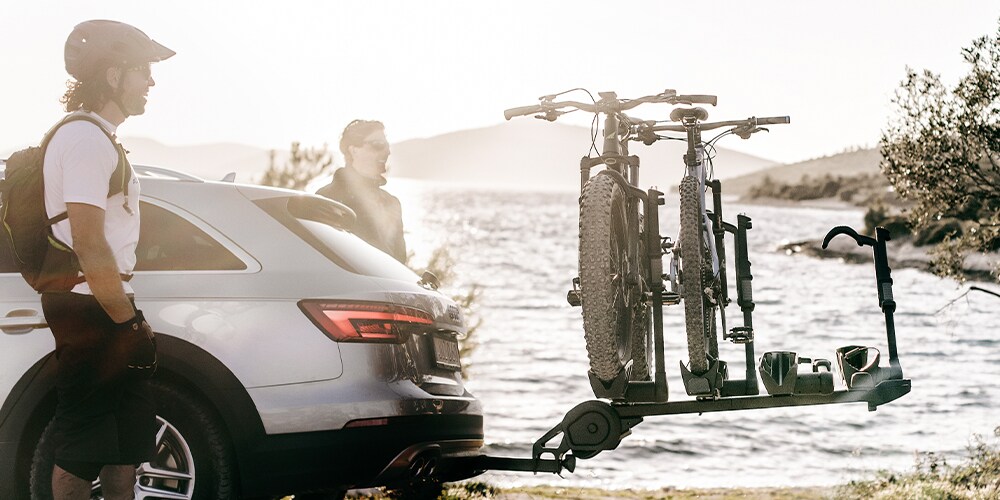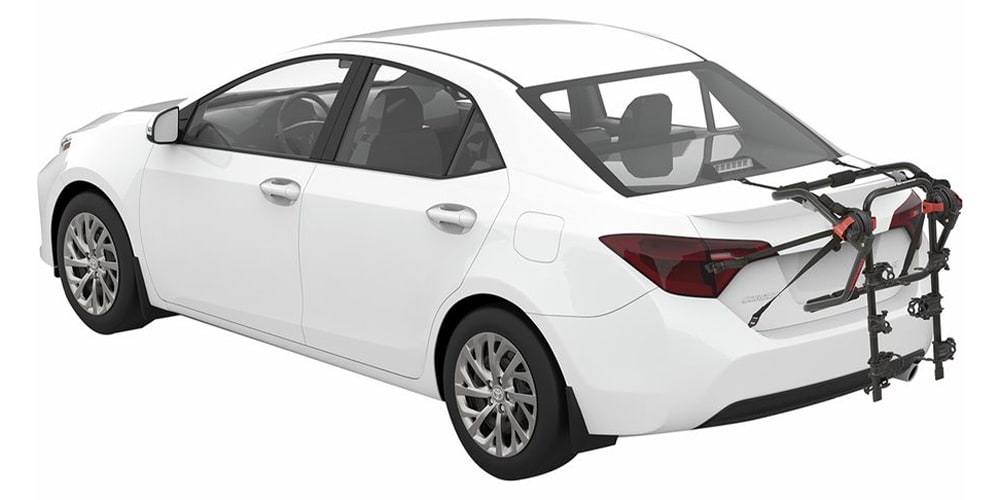Which Bike Rack Should You Get?
Have bikes, need to travel, right? We’re here to help you decide what rack system is best for you, your vehicle, and—most importantly—your bike(s).
The Rack Types

The Hitch Rack
—The best for you and your crew
Hitch racks are a top pick. They’re low to the ground for easy loading and unloading, they keep your bikes out of the path of high-speed bugs, rocks, and other highway bits that can wreck expensive paint and carbon bits, and they can safely support a small fleet of bikes on the most epic weekends away with your trail or roadmates.
Plus, the leg work with hitch racks is minimal. Simply mount your assembled bike rack onto the hitch and lock it in place.
What To Consider:
- The size of your hitch: your rack must fit your hitch: 1 ¼” or 2” hitch size.
- Tray-style or Vertical: The tray-style is by far the easiest to use—set the bikes on the tray, lock the bracing arm(s), cinch down the wheel strap, and go. A plus for vertical or swingarm style racks is they allow for a bit more tilt away from your vehicle’s rear hatch—like the Yakima Hangover series.
- The number of bikes you’ll carry: Most tray-styles hold two bikes—but an add-on makes that four. Vertical and swingarm racks can typically carry two to six bikes.
- The weight of your bikes and total load: Check the manufacturer specs to see if the rack will meet your needs. Electric bikes can top 60lbs per bike, which exceeds some rack maximum weight limits.

The Roof Rack
—The best for you and your rest
Roof racks are convenient if you don’t have a hitch or if you want to leave your hitch free to carry other items like a cooler or your camper trailer. The primary disadvantages to the roof rack are the loading height—let’s face it, the roof is much higher than the hitch and after a long ride you don’t want any extra work—and noticeable aerodynamic drag with bikes on top.
What to consider:
- The number of bikes you’ll carry: Unlike tray-style, you’ll buy one roof bike rack per bike. The only limit to the number of bikes you’ll fit is the width of your crossbars, with four bikes typically being a tight squeeze. But each vehicle’s fit capacity is unique. Chat with our Gearheads to learn how many bikes yours can hold.
- How frequently you’ll use it: This note is purley about convenience, but we feel it’s important. If you’re regularly transporting bikes, the roof rack system has a way of feeling like a bother, and the lower height of the hitch rack starts to make a lot of sense.
- The weight of your bikes and total load: Just as with hitch racks, check with the manufacturer specs to see if the rack will meet your needs.

The Rear-Mount Rack
—The best for you and your on-again-off-again cycling relationship
Rear-mount racks offer the convenience of transporting your bikes without the added cost of installing a hitch or roof rails and crossbars. If you’re just starting out in cycling, this is the rack type we’d recommend. Additionally, with a near-universal fit on most vehicles, you’ll be able to use the rack on multiple vehicles throughout its lifetime. When not in use, you can detach the full rack and stow it away until your next out-of-towner.
What to consider:
- The number of bikes you’ll carry: Rear-mount racks have limited hauling capacity—usually around a three-bike maximum.
- How frequently you’ll use it: The rack sits in an odd spot—resting over the rear window/hatch/trunk. Whether your bikes are racked or not, it’ll have a significant presence in your rear view on any drive. Removing and installing the rack can be a cumbersome task as well.
- The weight of your bikes and total load: Again, check with the manufacturer specs to see if the rack will meet your needs.

Need more answers on which rack works for you? Our Gearheads are just a call away!
Connect now using the chat feature, call 1.888.276.7130 or email: sales@competitivecyclist.com



